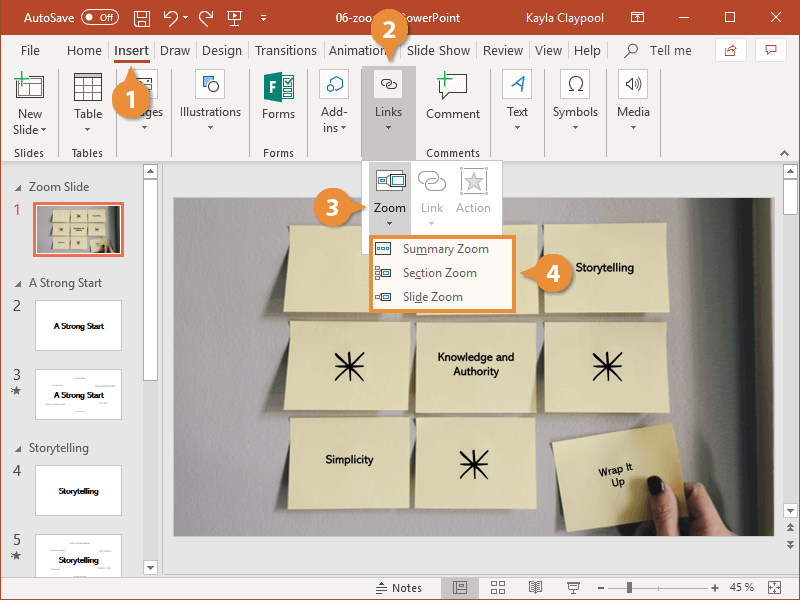

- #Powerpoint 2016 for mac zoom generator#
- #Powerpoint 2016 for mac zoom update#
- #Powerpoint 2016 for mac zoom full#
- #Powerpoint 2016 for mac zoom free#
- #Powerpoint 2016 for mac zoom mac#
#Powerpoint 2016 for mac zoom mac#
#Powerpoint 2016 for mac zoom full#
By having full control of the manufacturing and development cycle, Apple can bring even more in-house optimization to the macOS, as they have been for iOS and iPadOS over the years.
#Powerpoint 2016 for mac zoom free#
Apple will also be free to innovate in the design of the silicon platform, rather than being limited by Intel’s design choices. This also allows them to leverage relationships with other silicon fabricators to source chips, rather than relying on Intel ’s continued “iteration” that’s leading to a “14nm++++++++++” process, or the continued lack of product diversity with the 10nm process.

#Powerpoint 2016 for mac zoom update#
Apple will be able to update their Mac lineup on their own timeline, rather than being forced to delay products based on Intel’s ability to meet the release window. By moving to their own designs, Apple will be free from Intel’s release schedule, which have recently been unpredictable and faced with routine delays due to poor manufacturing yields.In the public consciousness, Intel is quickly becoming a point of ridicule against Apple’s Mac lineup, rather than a badge of honor.

#Powerpoint 2016 for mac zoom generator#
While Intel still wins out in certain enterprise and datacenter applications, as well as having a much better reputation for reliability and QA (AMD having shipped numerous chips with a broken random- number generator that prevented even booting some mainstream operating system), the number of such applications slowly dwindles with each new release from AMD, and as confidence among decisionmakers in enterprise increases. Most recently, they have fallen well behind AMD’s processor lines in cost to performance ratio, CPU core count, core design (monolithic design vs “chiplet”), power consumption to performance, silicon supply (Intel with significant manufacturing process and yield issues), and on-silicon security features. Intel has, in recent years, been making significant losses both in reputation and in actual product value, as well as velocity of product development, breaking their bi-yearly “Tick Tock” cycle for the first time in decades.Why make yet another? Here are the leading reasons: Throughout their history, Apple has already made two other storied CPU architecture switches - first from the Motorola 68k to PowerPC in the early 90s, then from PowerPC to Intel in the mid 2000s. The first question would likely be “Why would Apple do this again?”. Here is my personal take on how this switch will happen and be presented to the consumer. This understanding is a fairly common amongst various Apple insiders. Reasons for each are below.Īpple is very likely going to switch to switch their CPU platform to their in-house silicon designs with an ARM architecture. Tl dr Apple will be moving to Arm based macs in what I believe are 4 stages, starting around 2015 and ending around 2023-2025: Release of T1 chip Macbooks, release of T2 chip Macbooks, Release of at least one lower end model Arm Macbook, and transitioning full lineup to Arm. Today, I would like to further elaborate on that. As you may have seen, I sent the following Tweet: “The Apple ARM MacBook future is coming, maybe sooner than people expect”


 0 kommentar(er)
0 kommentar(er)
